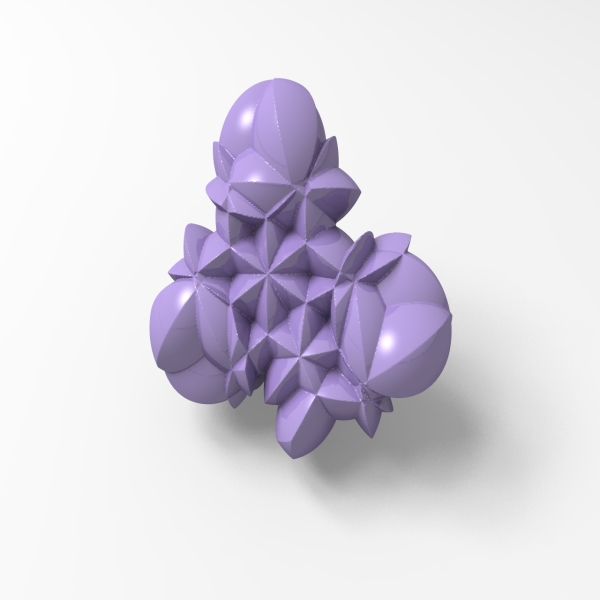James Dean Palmer
"Third Order Caffeine"
Digital print, 16" X 16", 2007.

This is an iso-surface of a third-closest point distance function
applied to the positions of
constituent atoms in the molecule, caffeine. Particularly interesting
in molecules are
the many natural two and three dimensional symmetries that exist.
These symmetries
often reveal themselves not just in a direct visual representation but
in higher order
distance functions. The discontinuities or sharp edges between smooth
surfaces occur at
the intersections with a three dimensional 3rd-nearest neighbor Voronoi diagram.
"Dodecahedron Flowering"
Digital print, 16" X 16", 2007.

This is an iso-surface of a fourth-closest point distance function
applied to the positions of
vertexes in a regular dodecahedron. These kinds of crisp complex
symmetries persist over many different nearest point distance
functions.
"C(60) after 9"
Digital print, 16" X 16", 2007.

This is an iso-surface of a ninth-closest point distance function applied to the
atomic positions of atoms in the Buckminsterfullerene molecule. More
commonly known as a "bucky ball," the underlying geometry is that of a
truncated icosahedron. This beautiful, deeply mathematical particle
resonates with symmetry as higher order nearest point distance
functions are applied.
James Dean Palmer
Assistant Professor of Computer Science,
Computer Science Department, Northern Arizona University
"Visualizing distance is an important theme in my work. Distance and
spatial relationships form the soul of geometry. Yet distance is
something that can be both concrete and real in one instant and
allusive and abstract the next. It is probably easy to imagine where
the closest fire station is, but where would you be if that was the
third closest fire station? The answer might be somewhat surprising.
I'm particularly interested in expressing these kinds of relationships
visually and concretely when they do become complex and abstract."